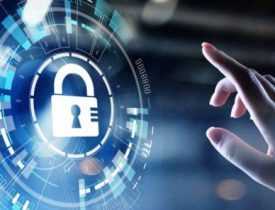Description
Course Name: Master Diploma in Information Technology
Course Id: MDIT/Q0001.
Education Qualification: 12th Pass.
Duration: 370 Hrs.
How You will Get Diploma Certificate:
Step 1- Select your Course for Certification.
Step 2- Click on Enroll Now.
Step 3- Proceed to Enroll Now.
Step 4- Fill Your Billing Details and Proceed to Pay.
Step 5- You Will be Redirected to Payment Gateway, Pay Course and Exam Fee by Following Options.
Card(Debit/Credit), Wallet, Paytm, Net banking, UPI and Google pay.
Step 6- After Payment You will receive Study Material on your email id.
Step 7- After Completion of Course Study give Online Examination.
Step 8- After Online Examination you will get Diploma Certificate soft copy(Scan Copy) and Hard Copy(Original With Seal and Sign).
Step 9- After Certification you will receive Prospect Job Opportunities as per your Interest Area.
Online Examination Detail:
- Duration- 120 minutes.
- No. of Questions- 60. (Multiple Choice Questions).
- 10 Questions from each module, each carry 10 marks.
- Maximum Marks- 600, Passing Marks- 40%.
- There is no negative marking in this module.
| How Students will be Graded: | ||
| S.No. | Marks | Grade |
| 1 | 91-100 | O (Outstanding) |
| 2 | 81-90 | A (Excellent) |
| 3 | 71-80 | A (Very Good) |
| 4 | 61-70 | B (Good) |
| 5 | 51-60 | C (Average) |
| 6 | 41-50 | P (Pass) |
| 7 | 0-40 | F (Fail) |
Benefits of Certification:
- Government Authorized Assessment Agency Certification.
- Certificate Valid for Lifetime.
- Lifetime Verification of Certificate.
- Free Job Assistance as per your Interest Area.
Syllabus
Master Diploma In Information Technology
Fundamentals of Computer and Information Technology
Characteristics of computer, Evolution of Computer, Block Diagram Of a computer, Generations of Computer, Classification Of Computers, Applications of Computer, Capabilities and limitations of computer, Basic Computer Organization, Storage Fundamentals, Software, Operating System, Data Communication, Business Data Processing, Computer Arithmetic, Understand a computer system that has hardware and software components, which controls and makes them useful, Understand the operating system as the interface to the computer system, Outline various application of IT, Differentiate between assembly and high level language, Identify various web browser.
Multimedia & Animation
Introduction to computers & networks, content development & distribution, art & science of multimedia, program production techniques, program production techniques, introduction to digital imaging, digital imaging: aesthetics and artistry, image development on different graphic software, preparation of digital images using media technologies, finishing and digital media outputting.
Concept of Programming Using C
Introduction and First Program, Variables and Data types, Console IO Operations, Operators and Expressions, Control Flow Statements, Working with Functions, Working with Arrays, Pointers, String Handling, Structures and Unions, File Handling, Pre-Processor Directives, Command Line Arguments and Variable Arguments, Searching and Sorting, Stack, Queue, Linked List, Trees.
Office Automation Tools
Basics of computer, Introduction to GUI based OS, Elements of Word Processing, Spreadsheet, Presentation, Introduction and Objective, Basics of Power Point, Creation of presentation, Introduction to Network and Internet, Web Browser, Communication and Collaboration, Objective of Spreadsheet, Elements of Electronics Spreadsheet, Introduction to various types of OS and its functions, User Interface, Various settings of GUI based OS, File and Directory Management.
Internet and Web Technology
TCP/ IP: TCP/IP Overview, TCP/IP and Internet, Layers of TCP/IP, Network Layer: Addressing, Sub netting, concepts of ARP, RARP, ICMP, IGMP. Transport Layer: UDP & TCP, Application Layer: Client server model, BOOTP,Core JAVA: JAVA fundamentals, overview of JAVA operators, control statements, introducing classes, inheritance, exception handling, AWT, working with window graphics and text, AWT controls, Layout manager.Advanced JAVA: Introducing threading, advantages, Multi-threading, JAVA and networking, TCP/IP client sockets, Whois, URL, Server sockets, Overview of a caching Proxy HTTP server.Applets and JDBC: Introducing Applets, Architecture of an applet, skeleton, HTML APPLET tag, Event Handling, JDBC,CGI Programming Introduction to Web Architecture, Apache Web Server, Perl programming, CGI programming with PerlNetwork Security: Network security basics and needs, cryptography, encryption and decryption, Ciphertext.
Data Communication and Computer Networks
Introduction to data communication and networking, Data Communication, Networks, Protocols and Standards, Standards Organizations. Line Configuration, Topology,Study of OSI and TCP/IP protocol suit: The Model,Functions of the layers,TCP/IP, Protocol Suites, Study of Signals: Analog and Digital, Periodic and Aperiodic Signals, Analog Signals, Time and Frequency Domains ,Composite Signals , Digital Signals, Study of Digital transmission: Digital to Digital Conversion, Analog to Digital Conversion, Study of Analog transmission: Digital to Analog Conversion, Analog to Analog Conversion, Study of Multiplexing: Many to one/one to Many, Frequency division Multiplexing, Wage division Multiplexing, Time division Multiplexing, Multiplexing applications, Types of transmission media, Error Detection and Correction, Digital data transmission, DTE-DCE Interface, Modems, 56K Modems , Cable Modems.

